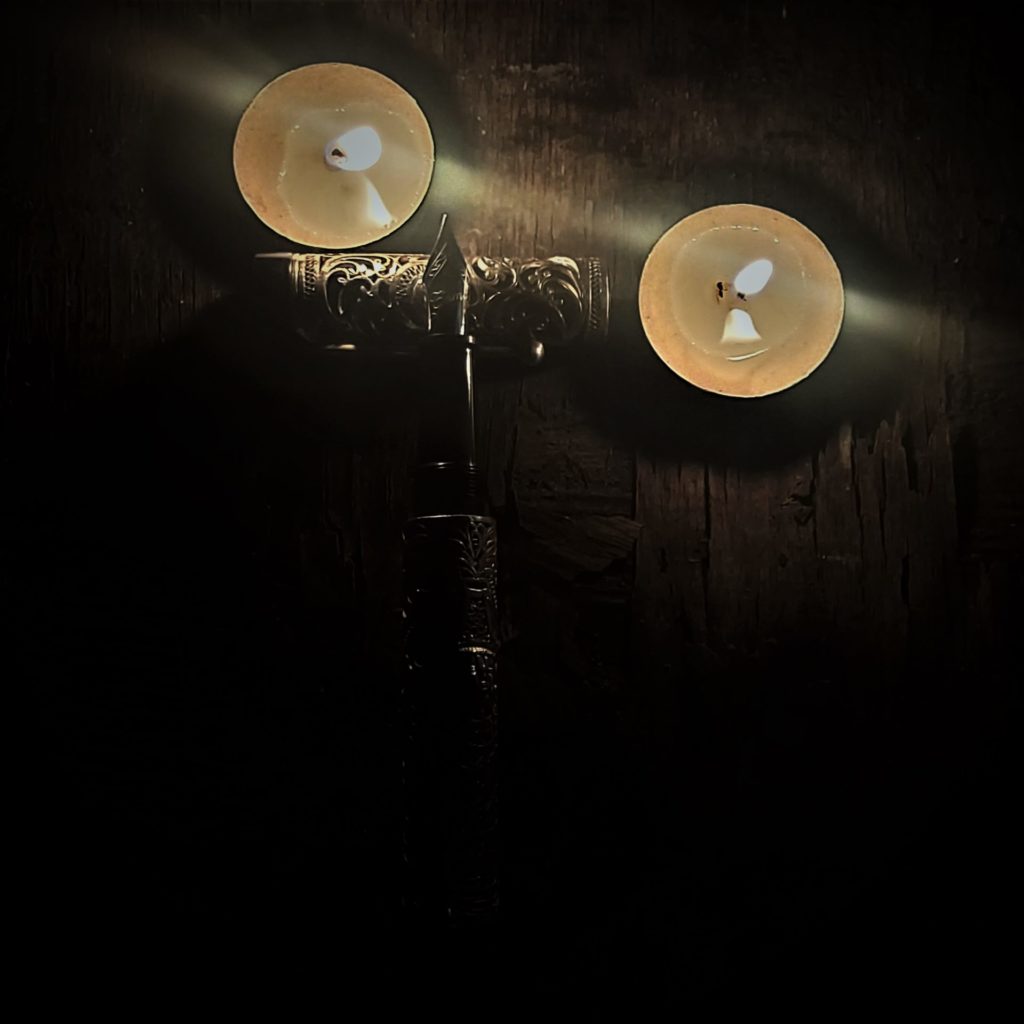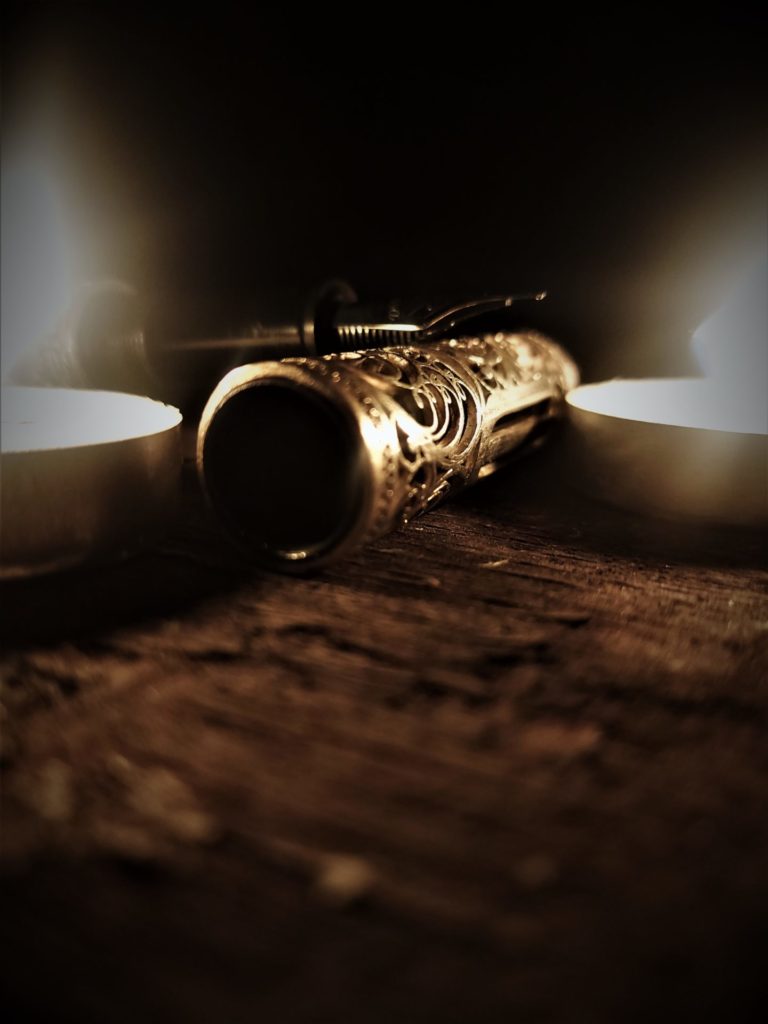
Silver filigree work on a fountain pen. Interesting subject, made more so by a near complete lack of knowledge about the same. When did the practise begin? Who were the artisans who perfected the art? Where can one get one, if one so desired? The background din, is near deafening.
Waldmann, which went operational in 1918 in the Black Forest region of Germany, and has since built up an enviable name for itself as the maker of silver and gold fountain pens, was certainly not the originator, though their contribution to the genre – metal pen making in general – is undisputed. For, much earlier, in the first decade of the 20th century itself, Waterman was known to offer silver “filigree” pens, instruments where the hard rubber (and later, increasingly celluloid) underneath used to show through. The term filigree – whatever it may mean specifically in the jewellery trade – was, and continues to be used generically, to refer to such pens, of which those offered by Waterman continues to be the stand bearers. The other key major players of the day: Parker, Sheaffer and Conklin included, were also known to offer such models, which underscores the fact that such filigree pens with sheet-metal overlays, were pretty popular with the dandies.

The facts, that the pens were overwhelmingly hard rubber and mostly eye-dropper fillers, lead them to be dated predominantly to the pre-war era (before restrictions on the use of precious materials not related to the war effort) had gone into play, or rationing would have simply made silver writing instruments prohibitively expensive. Though admittedly, it is more conjecture than backed by hard facts. Going by the sheer popularity of mechanical lead pencils fashioned out of silver during the period, one can also discern that they were fairly well accepted.
When such silver filigree pens had come to India, or how they had fired the imagination of the gentlemen (and women) here, is also something that I have very little knowledge about. That the Princes and the Nawabs and the sundry other well-heeled would have kept them filigree pens on their writing tables is again something that we can reasonably believe. However, not much more is known, least of all, by me. As a friend who specialises in antique silver collectibles pointed out, with time most of the ebonite got brittle and wasted away, leading to the silver shells being melted for reuse, which perhaps explains the abject lack of samples.

“The earliest creators in India were the European silver smiths who had initially introduced western motifs in such pens. However, with the local royals taking on to filigree worked pens in a big way, soon native design elements were married into the artefacts, and it wasn’t long before that the Gods and Goddesses nudged all designs out, as it had become fashionable to carry fountain pens that doubled up as the presiding deity, ready to bless, as it were” said a friend who owns a premier silver crafts establishment that was originally established centuries back by a Scottish gentleman. “We still do silver filigree work, though the art of turning pens has been long lost, the practice having been discontinued by us in the 1970’s.
Pratap Kumar, of Gem and Company, legacy pen-turners from Chennai is perhaps the last established fountain pen maker who still has the wherewithal capable of turning a filigree pen to perfection. His “Balaji pens”, crafted from sterling silver are still so sought after that there is a queue to get them. Besides, it takes almost half a month to craft one to Pratap Kumar’s stringent specifications, there remaining only a handful of craftsmen capable enough to meet them. First the silver shell is made and only then is the actual fountain pen handcrafted to fit into the case, not an easy task, even by the wildest stretches of the imagination.

“Our pens are hand turned and hand crafted as opposed to being machined” says Pratap Kumar, “naturally the time, the effort, the end product, the pricing, noting can be compared to products that are mass produced.”
But it is not pure demand and supply at play. Legend has it that these Balaji pens are extremely choosy about the homes they decide to bless and getting one is not as simple as placing the order and transferring the money. I should know, mine has taken more than three long years before reaching me, as will be vouched by my dear friend and fellow fountain pen collector Shreyas Yedla who had first planted the seeds of temptation in my heart.

Pratap Kumar, the man behind the creations is naturally ecstatic. “Fountain pens are seeing an uptrend and what is really very heartening is the way the youngsters are picking them up to fight against the digital onslaught. The demand for the Balaji pens too, are witnessing an upturn, which apart from being an extremely well-crafted fountain pen, is also a work of art, a conversation piece, with the obvious religious connotations for the faithful”. And all this, despite the fact that Gem and Company prefers not to talk about its Balaji pens – they have never even been displayed freely across the counter – preferring to make them only after receiving firm orders, that too from known customers.
It is a coincidence that mine has arrived just before Diwali to make my festival of lights just that much brighter.

For more information: https://www.facebook.com/gamapens

Amazing review of another Gem of a Pen from Gem and Co…loved the pics and review
Gama and its classic Indian pens, a combination of festivities always
Congratulations. Will love to own this beauty one day.